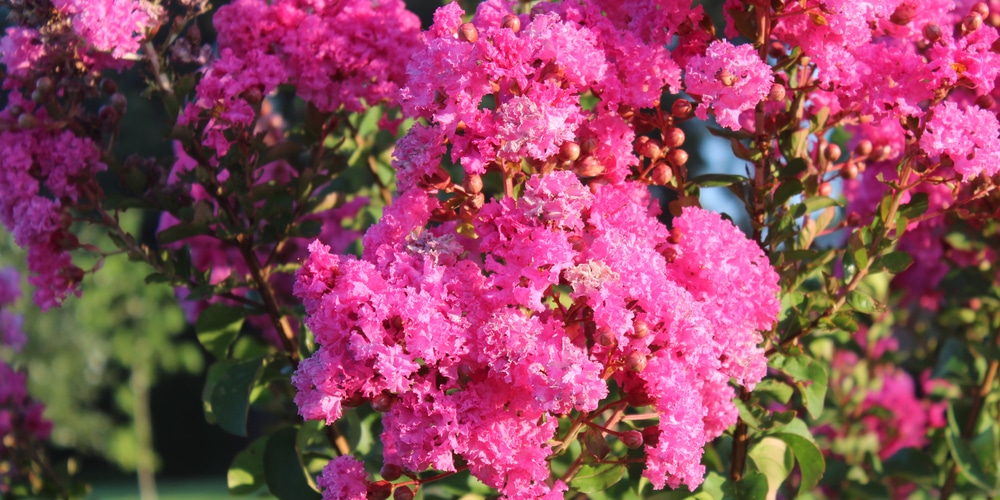Karl Foerster is a versatile grass species that can be used as a single stand or group. When planning a garden, consider the growing seasons of both your primary crop and any companions you wish to plant. Let’s look at Karl Foerster grass companion plants.
A few Tips on Companion Planting
There are several things you need to know about companion planting. The first thing one must realize is that not all plants grow well together. Some plants compete for the same resources, which can cause one or both of them to die prematurely.
When deciding what other plants you want to pair with your grass, the two main things you need to think about are how fast the plant grows and how tall the plant gets. For example, if you have a slower-growing grass-like Karl Foerster, you don’t want to plant anything that will overtake your grass or block out the sun from it.
What Can I Plant with Karl Foerster Grass?
Echinacea, Coreopsis, Rudbeckia and Liatris can be combined with Karl Foerster’ feather reed grass to create a beautiful landscape for your home.
You can plant Karl Foerster’ feather reed grass with Coreopsis, which has yellow flowers. Meanwhile, you can plant Echinacea with Liatris and Rudbeckia together as they are both purple and pink-colored plants.
When planting Karl Foerster and other grasses together, you can use many different types of grass and ornamental plants. The most crucial thing to remember when planting Karl Foerster with any plant is that they need to be able to survive similar growing conditions.
So, if you plant Karl Foerster with the African Daisy plant, the African Daisy will not do well in areas where it gets too much shade, but Karl Foerster can grow in areas where there are trees or buildings for shade.
What shrubs look good with Karl Foerster grass?
Karl Foerster can be complemented by many different shrubs depending on where you live and what color you want your yard to be. If you live near the Gulf of Mexico, try planting a Crepe Myrtle (Lagerstroemia) alongside your Karl Foerster. It’s a mildew-resistant plant that has pink flowers in the springtime. Also, put a little white flowering dogwood (Cornus florida) nearby if you want to bring out its blue-green foliage and yellow fall colors.
Other shrubs to mix with Karl Foester include black-eyed Susan, coneflower or Veronica. The black-eyed Susan is a charming flower with a complex name, but the coneflower and veronica are both easy to grow and look wonderful planted with Karl Foerster grass. Since Karl Foerster flowers come in solid colors, the black-eyed Susan will pop and add more color to the garden. The veronica is a low maintenance plant that will add texture to the garden. If you’re looking for a plant that’s easy to grow, the coneflower is a good choice.
Planting Karl Foerster with Summer/Winter Crop Cover Crops
Foerster works well with summer and winter cover crops such as cereal rye, wheat, and annual ryegrass and legumes, such as hairy vetch, Austrian winter pea and Hungarian winter pea.
This companion planting will provide a cover crop during the winter months when there is not much growth occurring on the field. The legume will fix nitrogen into the soil, supplying nitrogen for other crops during the next growing season.
Planting Karl Foerster with Spring/Summer Crop Cover Crops
In addition to legumes like crimson clover and Austrian winter peas, Foerster also works well with spinach, radishes and arugula. In warmer climates, you can plant a cover crop of fava beans to shade out weeds and provide nitrogen to the soil. The following season plant beans behind Foerster to take advantage of residual fertility left by the cover crop.
Planting Karl Foerster with Fall/Winter Crop Cover Crops
In the Fall/Winter months, plant Karl Foerster with cover crops like legumes and non-legumes, with different soil requirements. Legumes like clovers, Austrian field pea, and hairy vetch can help build the soil because they are deep-rooted and can add nutrients and organic matter to the soil. They can also help to keep the weeds out, which can save time and money if you have to do a lot of weeding in your garden.
Karl Foerster Grass Companion Plants: Final Thoughts
There are several different companion crops that will help establish the grass and then serve as a cover crop for later use in the rotation. You can choose companion plants that flower at different times of the year. You should choose companion plants that have different water needs. Also, choose companion plants that have different sunlight needs.


